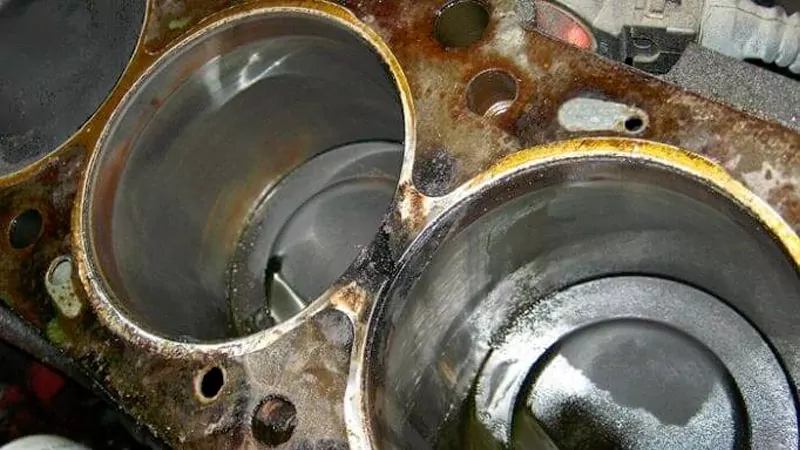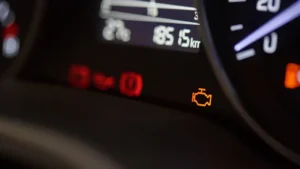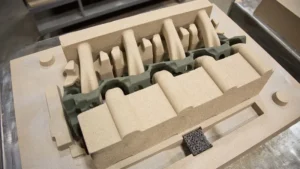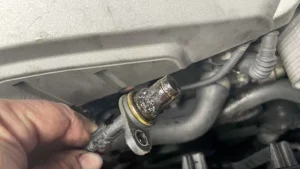If you own a car long enough, especially a vintage or high-mileage vehicle, you may eventually encounter a cracked cylinder head or a blown head gasket. While these problems are not as common as ignition failures, fuel delivery issues, or belt problems, they can lead to serious engine damage if ignored. Many enthusiasts discover these issues while restoring older cars, performing high-mileage maintenance, or after pushing an engine hard on long trips. Understanding the symptoms, causes, and diagnostic methods is essential for preventing minor problems from escalating into major repairs.

What is a Cracked Cylinder Head and a Blown Head Gasket?
Every internal combustion engine with pistons relies on a head gasket between the engine block and the cylinder head. This gasket seals combustion chambers as well as oil and coolant passages. Modern head gaskets are typically multi-layer steel with a Viton coating, while older gaskets were made from fiber or asbestos composites. The cylinder head itself is designed to withstand high temperatures and pressures, but it is not immune to damage.
A cracked cylinder head is a physical fracture in the metal, usually caused by overheating, material fatigue, or design flaws. Over time, thermal expansion and contraction can create stress points that eventually crack. A blown head gasket, on the other hand, occurs when the gasket deteriorates or fails, allowing compression, coolant, and oil to mix. Both problems can produce similar symptoms, which often makes accurate diagnosis challenging without proper testing and inspection.
Sudden Engine Performance Issues
One of the most noticeable signs of a cylinder head problem is a sudden drop in engine performance. You may experience rough idling, unusual noises, or the feeling that the engine has lost compression in one or more cylinders. This typically happens when a head gasket fails between two adjacent cylinders, allowing compression to escape. In many cases, the problem is identifiable through a compression test, which will reveal low or zero compression in the affected cylinders. Catching these issues early can prevent further damage and save significant repair costs.
The “Chocolate Milkshake” Effect
Another common symptom is when the coolant develops a milky, coffee-colored appearance, resembling a chocolate milkshake. This occurs when oil mixes with coolant due to a blown head gasket, or in some cases, a large crack in the cylinder head. Even if the engine seems to run normally, the contamination severely compromises lubrication and cooling. Continuing to drive under these conditions can lead to permanent damage to pistons, bearings, and cylinder walls.
Mild or Subtle Symptoms
Smaller cracks in the cylinder head often produce only mild or intermittent symptoms, which can make them difficult to detect. You might notice a slow increase in coolant consumption without any visible leaks, or observe white, sweet-smelling smoke coming from the exhaust, especially during cold starts. These cracks typically occur between the intake and exhaust valves, allowing coolant to seep into the combustion chamber. The problem may temporarily abate as the engine warms up and the metal expands, sealing the crack for a short period. Detecting subtle cracks often requires diagnostic tools such as compression tests, leak-down tests, or chemical CO₂ detection in the coolant.
Severe Overheating Damage
Prolonged overheating can result in catastrophic engine failure. When a car is driven under high temperatures for an extended period, the cylinder head may crack, or the head gasket may fail completely. In severe cases, the oil pan fills with emulsified brown sludge, a mixture of oil and coolant. This condition can damage pistons, bearings, and cylinder walls, making immediate inspection and repair crucial. Prompt attention to overheating symptoms is critical to prevent irreversible engine damage.
Causes of Cylinder Head Cracks and Blown Gaskets
Overheating is the most common cause of cylinder head cracks and head gasket failure. Driving with the temperature gauge in the red, under heavy loads, or on hot days can warp or crack the cylinder head. Repeated thermal stress weakens the head and gasket over time, eventually leading to failure. Other contributing factors include engine age, material fatigue, vibration, and design flaws. The head and gasket are in such intimate contact that it is often difficult to distinguish between a crack and a blown gasket without removing the head.
Accurate diagnosis is essential before attempting repairs. Compression tests can identify low or zero compression in affected cylinders, indicating potential gasket failure or a head crack. Leak-down tests reveal escaping gases entering the coolant, which confirms a compromised seal. Chemical CO₂ detection kits can also identify exhaust gases in the coolant. Visual inspection of a removed cylinder head allows mechanics to check for warping, corrosion, or visible cracks. For subtle fractures, machine shops often perform hot-tanking and pressure-testing, which can detect even the smallest or hidden cracks. Using these methods together ensures a reliable diagnosis before any repair work begins.
Repair and Maintenance Recommendations
Repair strategies vary depending on the severity of the damage. Minor gasket failures usually require replacing the head gasket, flushing the cooling system, and changing contaminated oil. Cracked heads may require welding, machining, or complete replacement, with valves and seals inspected and serviced as needed. Modern engines with complex electronics, fuel injection systems, and variable valve timing require special care during repairs. Simply replacing the gasket without confirming that the head is intact can lead to repeated failures. Routine maintenance, such as monitoring coolant levels, avoiding prolonged overheating, and checking for early warning signs, is the most effective way to prevent cylinder head and gasket problems.
Conclusion
Cracked cylinder heads and blown head gaskets are serious issues that can escalate quickly if ignored. From sudden compression loss to milky coolant, recognizing the symptoms early can prevent extensive engine damage. Proper diagnostic methods, timely repairs, and diligent maintenance are essential for preserving engine health. Whether dealing with a vintage restoration project or a high-mileage modern car, understanding these problems ensures that your engine continues to run reliably for many years.
Looking for high-quality, durable engine components? XINJIN specializes in manufacturing engines, cylinder heads, engine blocks, and other core parts with strict quality control and precision engineering. Contact us today for custom solutions or bulk orders, and ensure your engine delivers reliable performance and long-lasting durability!



